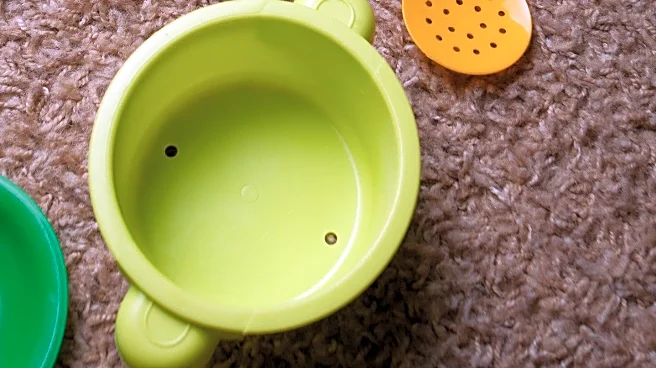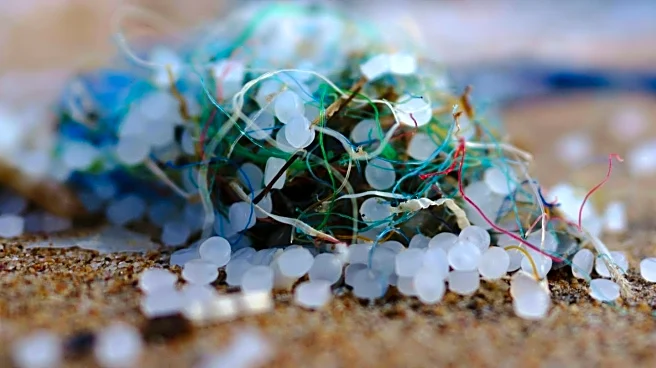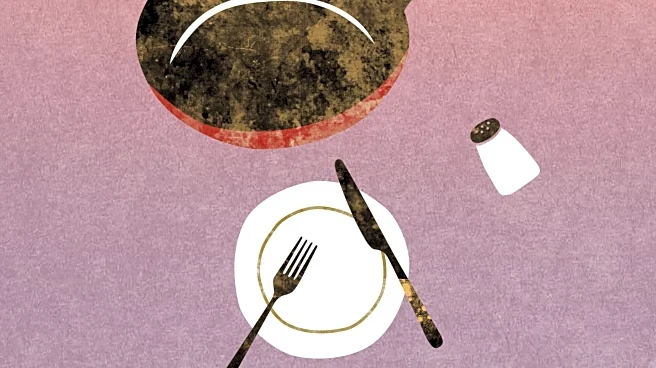What's Happening?
Recent findings highlight the presence of microplastics in common kitchen items, raising health concerns for consumers. Americans are estimated to ingest between 39,000 to 52,000 microplastic particles
annually through food, water, and kitchen utensils. Microplastics, defined as particles less than 5mm in length, have been associated with potential health risks such as cell damage, weakened immune systems, and abnormal organ development. Studies have shown that plastic containers, especially when heated in microwaves, can release significant amounts of microplastics into food. Additionally, plastic utensils and tea bags have been identified as contributors to microplastic exposure. Consumers are encouraged to consider alternatives such as glass, metal, or wooden kitchen items to mitigate these risks.
Why It's Important?
The widespread presence of microplastics in kitchen items poses a significant public health concern. As research continues to explore the potential health impacts, consumers are faced with the challenge of reducing exposure to these particles. The shift towards non-plastic alternatives could lead to a decrease in microplastic ingestion, potentially improving health outcomes. This issue also highlights the need for increased regulation and transparency in the manufacturing of food contact materials. Companies may face pressure to innovate and produce safer products, while consumers may demand clearer labeling and safer options.
What's Next?
As awareness grows, consumers may increasingly opt for non-plastic kitchen items, prompting manufacturers to adapt to changing preferences. Regulatory bodies could consider implementing stricter guidelines for food contact materials to ensure consumer safety. Further research is needed to fully understand the health implications of microplastic exposure, which could lead to new health advisories or recommendations. The legal landscape may also evolve, as seen in the lawsuit against Rubbermaid for allegedly misleading claims about the safety of their plastic containers.
Beyond the Headlines
The issue of microplastics extends beyond individual health concerns, touching on broader environmental and ethical dimensions. The production and disposal of plastic contribute to environmental pollution, affecting ecosystems and wildlife. Ethically, there is a growing demand for companies to prioritize sustainability and transparency in their practices. Long-term shifts may include increased consumer advocacy for environmental protection and sustainable living, influencing both market trends and policy decisions.











